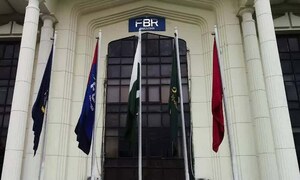Famous world rating agencies do not act on whimsical grounds but on a set criterion to upgrade or downgrade a country's credit rating. Explaining its recent stance on Pakistan, Moody's Investors Services has stressed that US dollar appreciation raises credit risks for sovereigns with large external funding needs and it is no coincidence that fragile external payment position and low foreign exchange reserves have elevated external vulnerability risks for Pakistan. The country is facing elevated external pressures stemming from strong domestic demand and capital-import heavy investments related to the China Pakistan Economic Corridor (CPEC). While Moody's expects a C/A deficit of 4.8 percent of GDP this year, reserve coverage for external debt repayment remains adequate for now but is expected to weaken in the days to come unless capital inflows increase substantially. Pakistan's gross borrowing requirements are among the highest - at around 27 percent - 30 percent of GDP, driven by persistent fiscal deficits and the government's reliance on short-term debt, with an average maturity of 3.8 years. Moody's further notes that although Pakistan is not a major recipient of volatile capital inflows, currency depreciation to alleviate external pressures could raise inflation and prompt additional rate hikes which would further weaken the government's already fragile fiscal position. Strengthening US dollar since mid-April, 2018 has also led to a sharp currency depreciation and a significant decline in foreign exchange reserves in a number of emerging and frontier market countries, increasing credit risks for those with large external funding needs.
The Moody's report, in our view, gives an overall view of the risk factors governing credit rating of a country and is particularly relevant in our case. It is strange to note, nonetheless, that the report hardly gives any importance to the variables such as GDP growth rate, the rate of inflation and the trends in a stock exchange but focuses entirely on the external sector developments for determining credit rating of a country. In a way, Moody's focus could be perfectly in order because while the domestic developments could somehow be managed by policymakers of the country through printing of more notes, raising the debt level, higher inflation and elevated demand, the foreign sector, especially in smaller economies, is not so much amenable to domestic policy adjustments. In fact, a protracted disequilibrium in the external sector, if continued for long, could wipe out completely foreign exchange resources of the country and ultimately lead to insolvency with highly negative impact on the economy and the lives of ordinary people.
Moody's report also fits perfectly with the latest developments in the external sector of Pakistan and could be considered as a warning to the country that its rating could be further downgraded if appropriate measures were not taken to reverse the situation. It says clearly that countries with large C/A deficits, substantial foreign currency government debt, high external debt repayments and low reserve position face high vulnerability risks. All these risk factors are present in our case, which is very unfortunate. The strengthening of US dollar in the international market and a substantial depreciation of rupee have added to the problems of an already fragile fiscal position. It is quite clear that Pakistan faces the prospects of another downgrade if our external sector situation does not improve and the related buffers are not erected to lower the vulnerability risks. The FATF has already put Pakistan on the "grey list" and another blow in the form of a credit downgrade will be costly for the country.
BR100
11,813
Decreased By
-53.2 (-0.45%)
BR30
35,707
Increased By
9.7 (0.03%)
KSE100
113,375
Decreased By
-773.4 (-0.68%)
KSE30
35,685
Decreased By
-267.2 (-0.74%)

























Comments
Comments are closed.